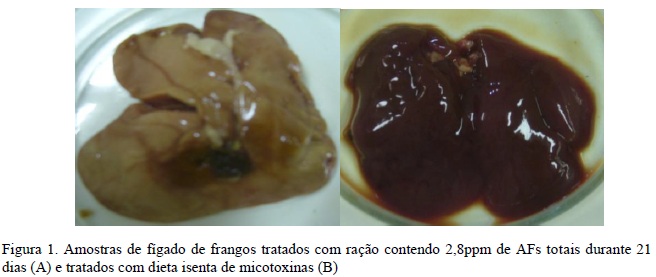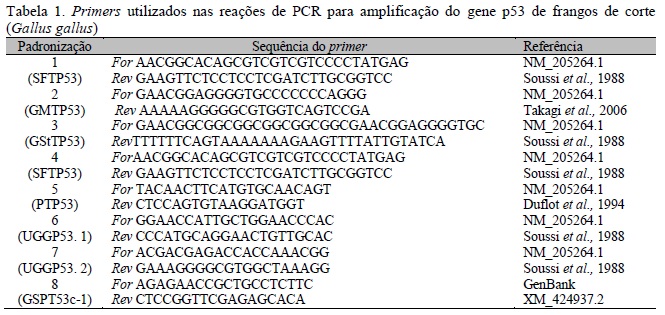To identify the effects of aflatoxins (AFs), Cobb lineage poultry were separated in an experimental group in which they were treated with commercial ration containing 2.8ppm of total AFs during 21 days (TG) and a control group without AFs exposure (CG). In the liver of poultries exposed to AFs, alterations were microscopically observed, which were characterized by hepatomegaly, a pale yellowish aspect with some hemorrhagic spots, and histologically a trabecullar disarranging pleomorphic hepatocytes with cariomegaly, intracytoplasmatic vacuolar degeneration, necrosis, lymphocytic infiltration and hyperplasia of biliary ducts. The PCR with GSPT53c-1 primers based on p53 candidate gen (GenBank XM_424937.2) generated a product of approximately 350 base pairs. The sequenced amplicon obtained from the DNA of treated poultry did not display any mutation or deletion, and the PCR- RFLP bands patterns were also not distinct in both experimental groups. The results indicated that transversion did not occur in the fragment amplified due to AFs exposure. As a consequence of results obtained with p53 gene (NM_205264.1) we concluded that PCR-RFLP and sequencing of PCR product are not appropriate diagnostic tools for the detection of poultry exposure to AFs, at least in the experimental conditions performed.
broiler; aflatoxins; p53 gen; PCR-RFLP





